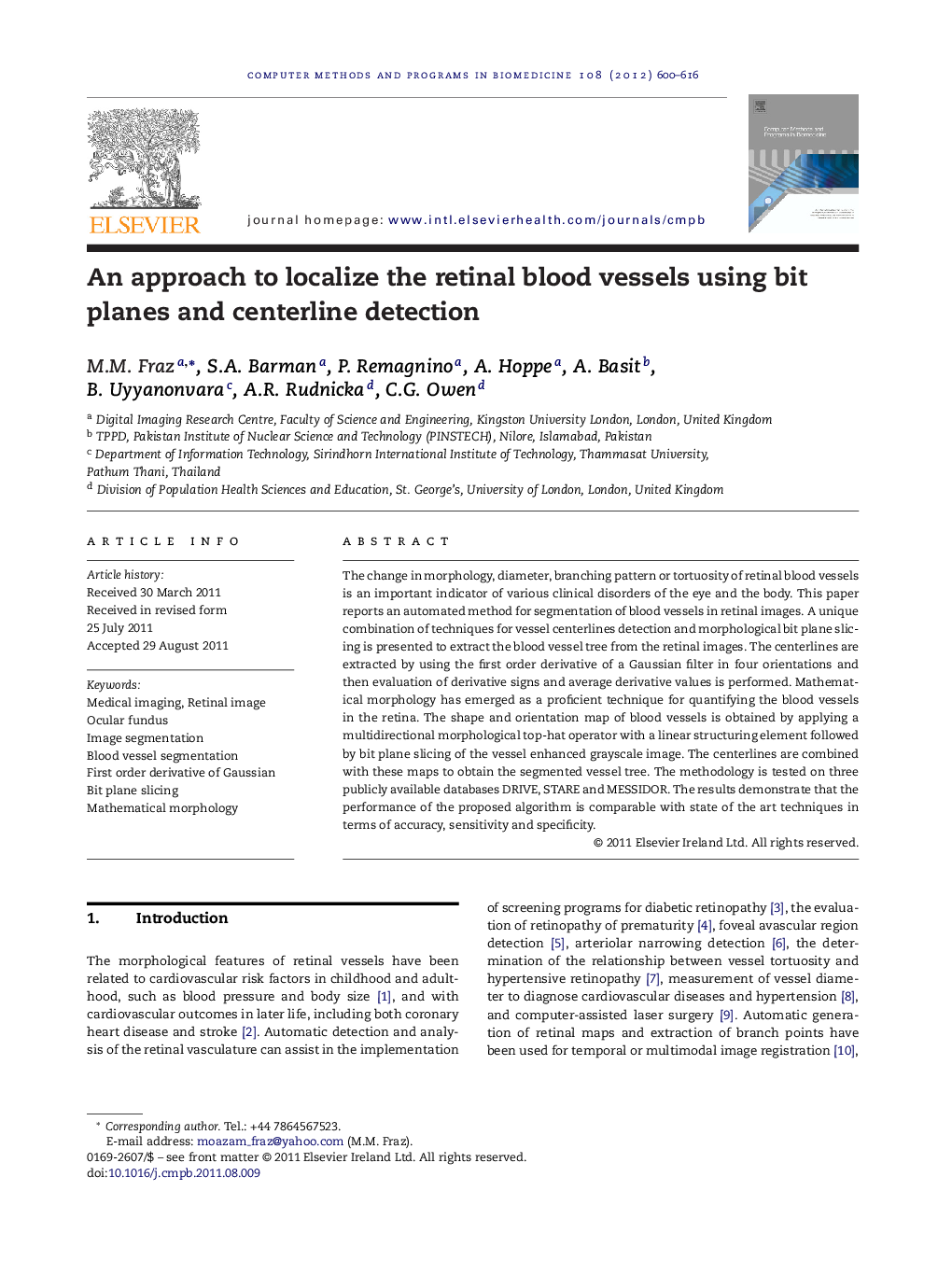| Article ID | Journal | Published Year | Pages | File Type |
|---|---|---|---|---|
| 467913 | Computer Methods and Programs in Biomedicine | 2012 | 17 Pages |
The change in morphology, diameter, branching pattern or tortuosity of retinal blood vessels is an important indicator of various clinical disorders of the eye and the body. This paper reports an automated method for segmentation of blood vessels in retinal images. A unique combination of techniques for vessel centerlines detection and morphological bit plane slicing is presented to extract the blood vessel tree from the retinal images. The centerlines are extracted by using the first order derivative of a Gaussian filter in four orientations and then evaluation of derivative signs and average derivative values is performed. Mathematical morphology has emerged as a proficient technique for quantifying the blood vessels in the retina. The shape and orientation map of blood vessels is obtained by applying a multidirectional morphological top-hat operator with a linear structuring element followed by bit plane slicing of the vessel enhanced grayscale image. The centerlines are combined with these maps to obtain the segmented vessel tree. The methodology is tested on three publicly available databases DRIVE, STARE and MESSIDOR. The results demonstrate that the performance of the proposed algorithm is comparable with state of the art techniques in terms of accuracy, sensitivity and specificity.
► Retinal vessel segmentation using a hybrid approach ► Vessel centerline detection with first order derivative of Gaussian. ► Vessel shape and orientation map with morphological bit planes. ► Retinal vessels are obtained by combining centerlines with shape and orientation map. ► Performance comparison using various color channels and public databases.
